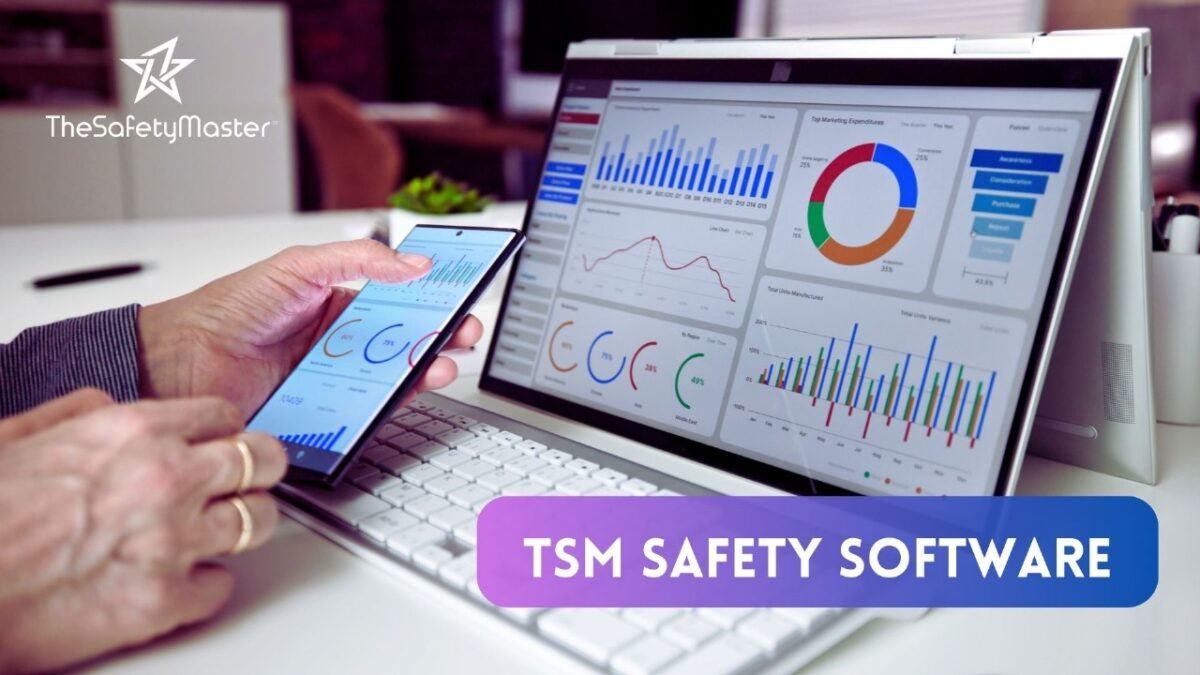Streamlining Safety Protocols: How Safety Software Is Revolutionizing Indian Industrial Practices

The Key Steps for Successful Safety Management System Implementation in High-Risk Industries
October 26, 2023
Strategic Emergency Planning: The Crucial Connection Between Risk Assessment and Hazard Identification
October 27, 2023In this article, we delve into the pressing issue of safety protocols in Indian industries and how a ground-breaking solution is transforming the landscape – safety software. As safety remains a paramount concern within industrial practices, it is imperative to explore the advancements that this software brings to the table. From streamlining processes to enhancing efficiency, this revolutionary tool promises to revolutionize the way safety measures are implemented, ensuring better outcomes for workers and businesses alike. Join us as we uncover the immense potential and benefits that lie ahead with the integration of safety software in Indian industrial practices. Stay tuned!
Introduction
In today’s rapidly evolving industrial landscape, ensuring the safety of workers and maintaining a secure work environment is paramount. However, many Indian industries still rely on traditional safety practices that often fall short in addressing the complex challenges they face. This article delves into the transformative power of safety software and its ability to revolutionize industrial safety protocols in India. As we explore the realm of streamlining safety protocols, readers can expect to gain valuable insights into how safety software is reshaping the way Indian industries approach workplace safety. From understanding the limitations of traditional practices to unravelling the key features and benefits of safety software implementation, this article aims to provide a comprehensive understanding of this game-changing technology
The Need for Streamlining Safety Protocols in Indian Industries
The Need for Streamlining Safety Protocols in Indian Industries in the vast landscape of Indian industries, ensuring the safety and well-being of workers is of paramount importance. However, traditional safety practices have often fallen short in providing comprehensive protection against potential hazards. With advancements in technology and an increasing emphasis on workplace safety, there arises a pressing need to streamline safety protocols in Indian industries.
Industrial accidents have not only resulted in immeasurable human suffering but also caused significant financial losses for businesses. The time has come to revolutionize safety practices and embrace innovative solutions that can mitigate risks and safeguard lives. By addressing the limitations of traditional methods, streamlining safety protocols through the use of cutting-edge safety software can lead to a transformative shift towards improved industrial practices.
Effective implementation of streamlined safety protocols can create a work environment that prioritizes employee well-being while simultaneously enhancing productivity and efficiency. Through intelligent data analysis, predictive algorithms, and real-time monitoring capabilities, safety software empowers organizations to identify potential hazards even before they arise. By embracing this technological revolution, Indian industries have an unprecedented opportunity to foster a culture of proactive prevention rather than reactive response.
In summary, the need for streamlining safety protocols in Indian industries has never been more urgent. Traditional methods have proven insufficient in creating truly secure work environments. However, by embracing advanced safety software solutions, businesses can unlock untapped potential for growth while guaranteeing the well-being and happiness of their workforce. It is time for India’s industrial sector to embark on this transformative journey towards a safer future.
Traditional Safety Practices in Indian Industries
Traditional Safety Practices in Indian Industries: In the realm of Indian industries, safety practices have long been an integral part of operations. The significance of ensuring a safe working environment has been acknowledged for centuries, with ancient texts highlighting the importance of precautions and protection. However, it is essential to understand that traditional safety practices in Indian industries have often relied on conventional methods and manual processes.
Historically, safety measures were primarily focused on reactive responses rather than proactive prevention. Safety guidelines were often limited to periodic safety inspections, basic training sessions, and the enforcement of rudimentary rules. While these practices served as a foundation for ensuring worker well-being, they fell short in effectively addressing evolving challenges posed by modern industrial processes and technologies.
Moreover, the sheer scale and diversity of Indian industries added complexity to implementing standardized safety protocols across different sectors. Each industry had its own set of best practices that were not always adaptable or transferable to others. This lack of uniformity not only hindered the overall progress but also led to inconsistencies in safeguarding workers’ lives.
Despite these limitations, it is important to recognize that traditional safety practices laid the groundwork for a culture of responsibility towards workers’ welfare. They paved the way for revolutionary advancements in industrial safety by identifying gaps that needed improvement. With the advent of technology and innovative solutions such as safety software systems, Indian industries are now empowered to take their commitment towards worker protection to unprecedented heights.
The Limitations and Challenges of Traditional Safety Practices
The Limitations and Challenges of Traditional Safety Practices in the realm of Indian industrial practices, traditional safety protocols have long been the cornerstone of workplace safety. However, they are not without their limitations and challenges. Firstly, these practices often rely heavily on manual record-keeping, making it prone to errors and delays in accessing critical information when needed most. Additionally, the sheer volume of paperwork involved can be overwhelming and time-consuming for safety officers, diverting their attention from proactive safety measures.
Furthermore, traditional safety practices in Indian industries tend to be reactive rather than preventive. This approach leaves industrial establishments vulnerable to potential hazards that could have been avoided altogether with more proactive measures. The lack of real-time data monitoring and analysis makes it challenging to identify patterns or trends that could help mitigate potential risks before they escalate into accidents or injuries.
However, amid these challenges lies an opportunity for improvement – the advent of safety software is revolutionizing how Indian industries approach workplace safety. By streamlining processes and automating data collection, analysis, and reporting, safety software enables organizations to proactively identify potential risks and implement preventive measures promptly. With real-time visibility into safety performance indicators, companies can create a culture of transparency and continuous improvement – ultimately leading to safer work environments for all employees.
Introducing Safety Software: A Game-Changer in Industrial Safety
Introducing Safety Software: A Game-Changer in Industrial Safety in the realm of industrial safety, a revolutionary force has emerged – safety software. This cutting-edge technology is transforming the way Indian industries prioritize and execute safety protocols. With its powerful ability to streamline processes, enhance communication, and collect valuable data, safety software has become the beacon of hope for organizations striving to create a safer work environment.
Gone are the days of laborious manual record-keeping and fragmented safety systems. Safety software serves as a unified platform that consolidates crucial information, ranging from incident reports to training records, in one secure digital space. This not only saves time but also eliminates the risk of overlooking critical details amidst a sea of paperwork.
Moreover, safety software empowers organizations with real-time data insights that enable proactive decision-making. By analysing patterns and trends within incident reports or hazard assessments, companies can identify potential risks before they escalate into serious accidents. This predictive capability is invaluable in preventing injuries and ensuring workplace well-being.
In essence, by embracing safety software solutions, Indian industries are embarking on an inspiring journey towards a safer future. This technological marvel not only simplifies complex safety processes but also fuels innovation by fostering collaboration among stakeholders at all levels. Ultimately, it instils confidence in employees and stakeholders alike – knowing that their well-being is prioritized and that their contributions are shaping a brighter tomorrow.
Key Features and Benefits of Safety Software in Industrial Practices
Key Features and Benefits of Safety Software in Industrial Practices: Safety software offers an array of remarkable features that have revolutionized industrial practices in India. Firstly, it provides real-time monitoring and alerts, allowing companies to proactively identify potential hazards and mitigate risks. This ensures a safer working environment for employees while minimizing the occurrence of accidents or injuries.
Additionally, safety software enables efficient incident reporting and investigation. With streamlined documentation processes, companies can easily track incidents, collect vital data, and analyse trends. This not only assists in meeting regulatory requirements but also helps identify areas for improvement to enhance overall safety performance.
Moreover, safety software facilitates seamless communication among different stakeholders involved in safety management. It offers centralized platforms for sharing information, conducting training programs, and promoting collaboration between departments. By fostering a collective commitment to safety across the organization, it contributes to building a robust safety culture where every employee feels empowered to prioritize their well-being.
In essence, the key benefits of implementing safety software in industrial practices are heightened risk awareness leading to fewer accidents or injuries; improved incident management resulting in faster resolutions; enhanced communication fostering a proactive approach towards workplace safety. By leveraging these features to their advantage, Indian industries are transforming their operations into safer environments that prioritize employee well-being above all else.
Implementing Safety Software: The Steps and Considerations
Implementing Safety Software: The Steps and Considerations to successfully implement safety software in Indian industries, a strategic approach is crucial. Firstly, it is important to assess the specific needs and requirements of the organization. Conducting a comprehensive audit of existing safety protocols will help identify gaps that can be addressed by the software. Additionally, involving key stakeholders from various departments will ensure that all perspectives are considered.
Once the needs are determined, the next step is selecting the right safety software solution. This involves extensive research and evaluation of available options in the market. Factors such as user-friendliness, compatibility with existing systems, scalability, and vendor reputation must be carefully weighed.
After selecting the software, proper planning and preparation are vital for a smooth implementation process. This includes allocating dedicated resources for training employees on how to effectively use the software and integrating it into daily operations. Communication plays a critical role in this stage to keep all employees informed about upcoming changes and benefits of the new system.
Implementing safety software also requires adapting existing workflows to accommodate new processes enabled by technology. This might involve revisiting standard operating procedures (SOPs) and ensuring they align with the capabilities of the software. Regular monitoring during this transition phase is essential to identify any challenges or areas where additional support may be needed
Real-Life Examples of Safety Software Implementation in Indian Industries
Real-Life Examples of Safety Software Implementation in Indian Industries in the bustling city of Mumbai, one prominent steel manufacturing company has embraced the power of safety software to revolutionize its industrial practices. By implementing a state-of-the-art safety management system, this company has not only streamlined its safety protocols but also witnessed a significant reduction in accidents and incidents. The software enables real-time monitoring, instant notification of potential hazards, and comprehensive data analysis to identify patterns and trends. This proactive approach has transformed their workplace into a safer environment where employees feel reassured and motivated.
Meanwhile, in Chennai, a leading automotive manufacturer has successfully integrated safety software into its operations. By leveraging cutting-edge technology, this forward-thinking company has automated various safety processes, from equipment inspections to incident reporting. The software’s seamless integration with existing systems enables efficient data sharing across departments and facilitates collaboration among teams. As a result, the company has experienced improved communication channels, enhanced incident response times, and increased employee engagement in safety initiatives.
Moving north to Delhi NCR region, an oil refinery enterprise exemplifies how safety software can transform cumbersome manual processes into streamlined workflows. With the implementation of an innovative digital platform customized for their specific needs, this refinery now ensures compliance with stringent safety regulations while minimizing paperwork and administrative burdens. Real-time reporting features provide valuable insights to managers and supervisors on potential risks or deviations from standard procedures. Consequently, this organization boasts an impeccable track record in maintaining high levels of operational safety while promoting a culture of accountability among its workforce.
These real-life examples demonstrate that the adoption of safety software is not only feasible but also highly effective for Indian industries seeking to enhance their safety protocols
Overcoming Resistance and Creating a Safety Culture with Safety Software
Overcoming Resistance and Creating a Safety Culture with Safety Software: Implementing safety software in Indian industries often faces initial resistance from employees and management who are accustomed to traditional safety practices. However, with the right approach, this resistance can be overcome, leading to the creation of a robust safety culture within the organization.
One effective strategy is to involve employees in the decision-making process from the beginning. By including them in discussions and seeking their input on safety software selection and implementation, they will feel valued and more likely to embrace the change. Additionally, providing comprehensive training programs that highlight the benefits of safety software and address any concerns can help alleviate scepticism.
Creating a strong safety culture requires effective communication at all levels of the organization. Regularly sharing success stories and testimonials of how safety software has improved workplace safety can inspire others to adopt the new system enthusiastically. Furthermore, fostering an environment where reporting incidents or near misses is encouraged without fear of retribution cultivates a culture of transparency and continuous improvement. By successfully overcoming resistance through inclusive decision-making processes and open communication channels, Indian industries can establish a positive safety culture that embraces the transformative potential of safety software
The Future of Industrial Safety in India with Safety Software
The Future of Industrial Safety in India with Safety Software: As we gaze upon the horizon of industrial safety in India, a bright future awaits, thanks to the remarkable advancements in safety software. With its ability to streamline safety protocols and harness the power of data analysis, safety software is poised to revolutionize Indian industries. Gone are the days of relying solely on manual methods and paper-based documentation. The future beckons us towards a technologically-driven era where safety is prioritized and accidents are minimized.
Picture a future where every aspect of industrial safety is seamlessly integrated into a comprehensive software solution. Real-time monitoring systems detect potential risks, while predictive analytics identify emerging hazards before they escalate into disasters. Advanced algorithms analyse vast amounts of data to provide actionable insights, empowering organizations to proactively address safety concerns. With this cutting-edge technology at their fingertips, Indian industries will witness a paradigm shift towards proactive risk management.
Envision a scenario where worker engagement and participation are fostered through user-friendly interfaces and interactive training modules offered by safety software. Empowered with knowledge and equipped with intuitive tools, employees become active participants in creating a safe working environment. This holistic approach not only enhances productivity but also reinforces a culture of care and accountability within organizations. The ripple effect will be felt across industries as safer work environments lead to reduced accidents, improved employee morale, and increased overall efficiency.
In this promising future, Indian industries will stand at the forefront of global best practices in industrial safety. With each passing day, more companies will embrace the transformative potential of safety software as they witness its tangible benefits first-hand. By investing in advanced technologies that prioritize employee well-being and promote operational excellence hand-in-hand, India’s industrial landscape will flourish with thriving businesses that prioritize human life above all else
Case Studies: Success Stories of Indian Industries Revolutionized by Safety Software
Case Studies: Success Stories of Indian Industries Revolutionized by Safety Software in the realm of Indian industries, safety software has emerged as a powerful tool, transforming traditional safety practices and paving the way for remarkable success stories. Let us delve into some captivating real-life examples that highlight how safety software has revolutionized industrial practices across various sectors.
One such awe-inspiring case study takes us to a leading manufacturing company in Mumbai. Prior to implementing safety software, the company grappled with frequent accidents and struggled to maintain compliance with regulatory standards. However, after integrating a robust safety software system, they witnessed a dramatic reduction in incidents and near misses. The dynamic risk assessment feature of the software enabled them to identify potential hazards in real-time, allowing immediate corrective actions to be taken. Consequently, not only did their accident rates plunge significantly but also their overall operational efficiency improved exponentially.
Another remarkable success story originates from a prominent chemical plant located in Gujarat. By adopting cutting-edge safety software solutions tailored specifically for hazardous environments, they achieved unprecedented levels of workplace safety. The intelligent incident reporting module empowered employees at all levels to report hazards swiftly and effectively. This proactive approach not only prevented accidents but also fostered a culture of transparency and accountability among the workforce. As a result, the plant recorded zero fatalities for three consecutive years, earning accolades for exemplary safety standards within the industry.
These inspiring case studies exemplify how Indian industries are embracing technology-driven solutions to revolutionize their safety practices successfully. By harnessing the power of advanced safety software systems, companies are not only safeguarding human lives but also bolstering their overall productivity and reputation within their respective sectors
Conclusion
In conclusion, the adoption of safety software in Indian industries is revolutionizing the way safety protocols are implemented and upheld. With its advanced features and benefits, it has become a powerful tool in enhancing workplace safety and mitigating risks. By streamlining safety practices, it not only ensures the well-being of employees but also contributes to increased productivity and cost savings for organizations. As more companies embrace this technology-driven approach, we can envision a future where Indian industries prioritize worker safety as a fundamental value, fostering a culture of care and progress for generations to come.



